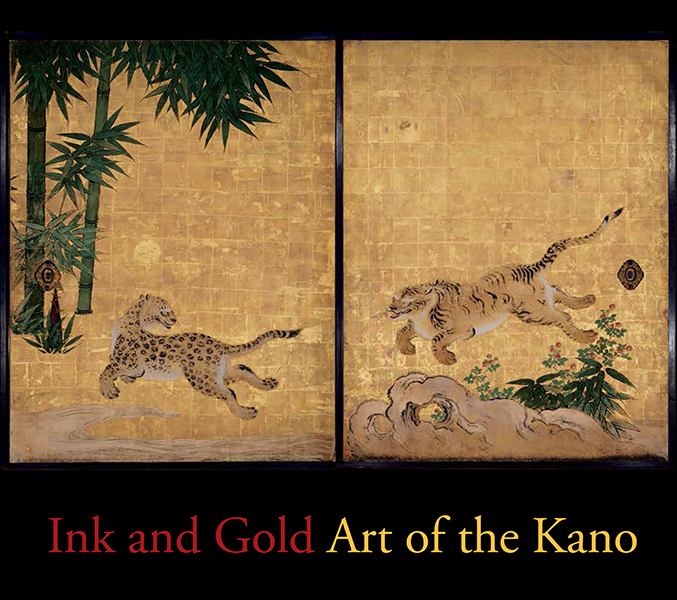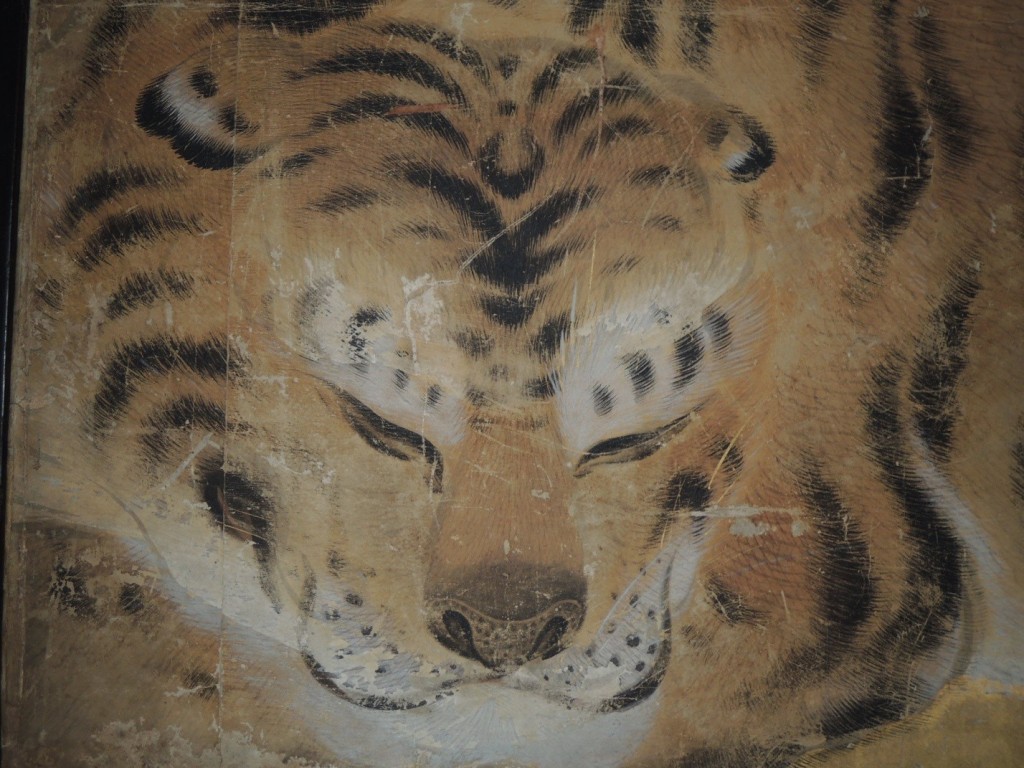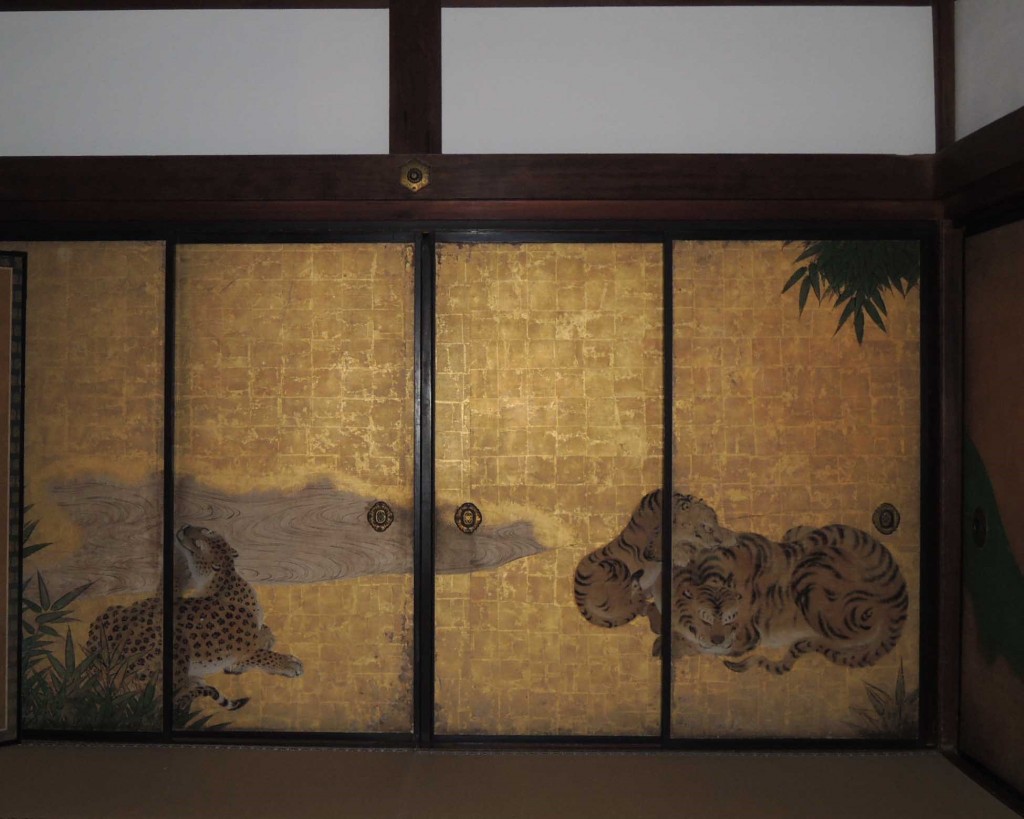日曜美術館「光琳は生きている」
[Eテレ]4月5日(日) 午前9:00~10:00
[Eテレ]4月5日(日) 午前9:00~10:00
今年は琳派400年。琳派の名の由来となった江戸時代の巨匠・尾形光琳を60分の拡大版で特集する。この春、光琳の最高傑作であり、日本美術史上屈指の国宝「燕子花図屏風」と「紅白梅図屏風」が56年ぶりに同時に展示された。番組では、いま第一線で活躍するアーティストたちが、光琳の国宝と向き合い、自らの創作を通して光琳の魅力を探っていく。千住博、会田誠、猪子寿之、鴻池朋子、杉本博司。どんな作品が生まれるのか。
【出演】日本画家、ビエンナ―レ優秀賞…千住博,現代美術作家…杉本博司,アーティスト…会田誠,チームラボ株式会社代表取締役…猪子寿之,現代美術家…鴻池朋子,東京大学名誉教授…河野元昭
【司会】井浦新,伊東敏恵
【司会】井浦新,伊東敏恵
Tiger stripes in ink and gold
Posted by
artbooks March 23, 2015
artbooks March 23, 2015
Felice Fischer –
As curator of the exhibition, Ink and Gold: Art of the Kano, on view now at the Philadelphia Museum of Art, I often am asked, “which painting do you like best?” This is a difficult question to answer, akin to asking a parent to name a favorite child. Nevertheless, there are inevitably some works that speak to me more than others. One image of which I am particularly fond is the tiger sleeping on one of the eight sliding door panels coming to Philadelphia from the venerable Kyoto temple, Nanzen-ji.
The eight sliding doors are part of a larger ensemble of panels depicting tigers in a three-room building that are part of the temple abbot’s quarters. It is thought that the panels were originally made for and housed in a castle in the 1630s, and moved to Nanzen-ji in the 1650s. The paintings are attributed to the great seventeenth-century artist Kano Tan’yū (1602-1674), who is known to have created tiger- themed wall paintings for other sites, such as Nijō Castle and Nagoya Castle. Japanese castles of this period were built and decorated in a regulated format and style: there were a series of buildings, moving from public waiting rooms and reception halls at the front, to gradually more private spaces that comprised the living quarters at the rear of the complex. The painted decorations also changed to follow the physical layout, with more impressive, colorful images in the public spaces, and quieter, more subdued monochrome ink paintings in the private rooms.
The painted pride of tigers was invariably part of the public halls, usually spread out over three rooms that housed the lord’s retainers and guards. The tigers were meant to reflect the power and authority of the lord of the castle, to keep evil spirits at bay while inspiring awe in the viewer. The source for tigers as a subject matter, like much else in Japanese culture, came from China. There the tiger was one of the Daoist guardians of the four directions, traditionally associated with the West, and often paired with the guardian of the East, the dragon. In the tenth to eleventh centuries , this pairing was adapted by Zen Buddhists, and monochrome ink renderings of the two often flank a middle scroll with an image of Kannon, the bodhisattva of mercy in Buddhist lore. Zen artists also took up the theme of tigers in a grouping called “The Four Sleepers.” Three of the sleepers are Zen eccentrics and the fourth companion is a tiger. Their tranquil napping symbolized the peace found by those who have attained Buddhist enlightenment, and the subject became a popular one outside Zen circles as well.
Kano Tan’yū’s sleeping feline is accompanied by a cub licking his fur, and another adult tiger scratching its chin. The latter beast is spotted rather than striped. As tigers were not native to Japan, artists had only pelts or other paintings to go by, and there was some confusion about “spotted” tigers. Often the smaller tigers, whether meant to be female or cubs, are spotted. While Tan’yū never saw an actual tiger, his models may have been the menagerie of cats owned by one of his patrons, Sakuma Shōgen Sanekatsu. Tan’yū painted a “double portrait” of Sakuma with his favorite cat, which is also in the exhibition. No matter what his source , Tan’yū certainly captured that absolute contentment of a deep feline sleep.

Felice Fischer is Luther W. Brady Curator of Japanese Art and Senior Curator of East Asian Art at the Philadelphia Museum of Art. She is curator of the exhibition and co-author of the accompanying volume, Ink and Gold: Art of the Kano. Here is a lovely introductory video about the Kano, featuring Felice Fischer:





沒有留言:
張貼留言